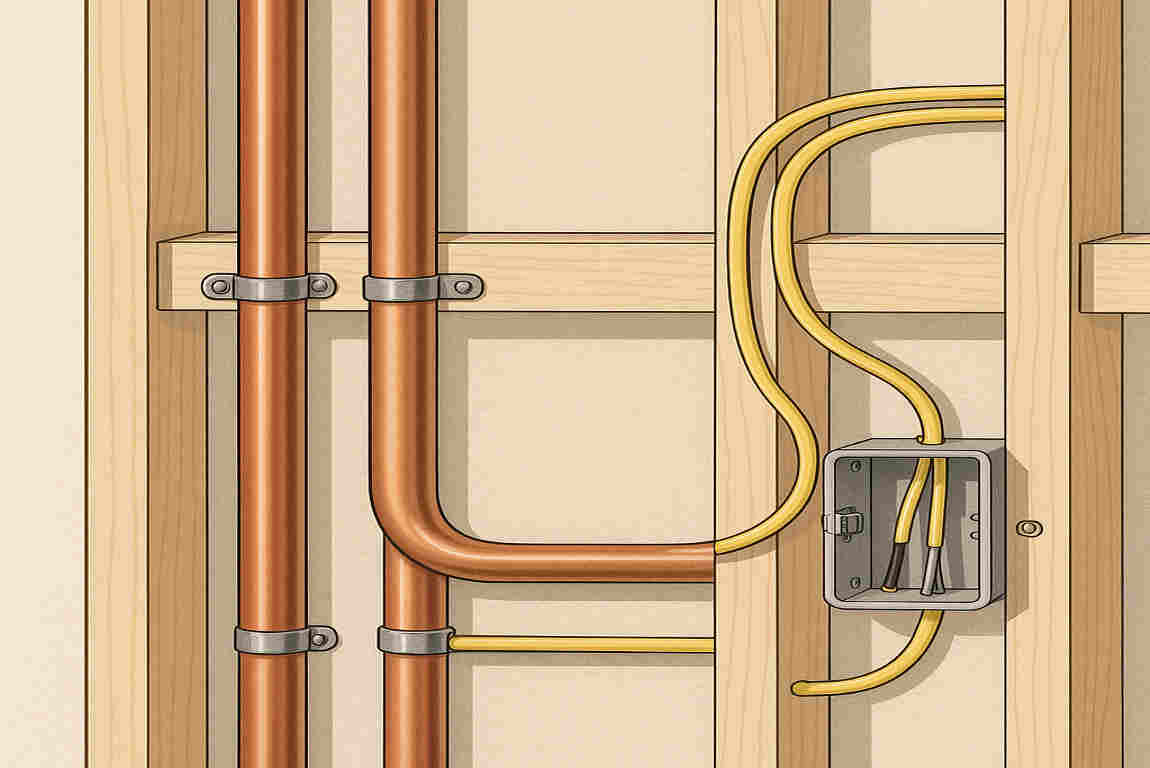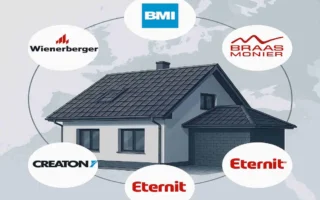When planning or renovating your home, a common question arises: can you run electrical wire next to house plumbing safely? This topic is essential for homeowners, electricians, and builders alike, as it directly impacts the safety and functionality of a home. Electrical wiring and plumbing systems are two critical components of any house, but their proximity can raise concerns about potential risks and code compliance.
Understanding the Basics: Electrical Wiring and Plumbing Systems
Before diving into the specifics, it’s important to understand the basics of how electrical wiring and plumbing systems function in a house. Both systems serve entirely different purposes but often share the same spaces, such as wall cavities, basements, and utility rooms.
What Is Electrical Wiring?
Electrical wiring refers to an interconnected network of wires that carry electricity from the main power source to the various outlets, appliances, and devices in your home. The cables are typically insulated and enclosed in conduits or protective sheathing to prevent electrical hazards.
- Materials Used: Copper or aluminum wires, insulated with PVC or other non-conductive materials.
- Function: Delivering electrical energy safely and efficiently throughout the home.
- Safety Requirements: Proper grounding, insulation, and adherence to electrical codes to prevent shocks, short circuits, and fires.
What Is a Plumbing System?
Plumbing systems comprise pipes, fixtures, and fittings that transport water to and from your home. They include both supply lines (delivering clean water) and drainage lines (removing wastewater).
- Materials Used: Copper, PVC, PEX, or galvanized steel pipes.
- Function: Ensuring a steady flow of water for drinking, cleaning, and waste removal.
- Safety Requirements: Leak prevention, proper sealing, and adherence to plumbing codes to avoid water contamination or structural damage.
Why Proximity Matters
The intersection of water and electricity is inherently risky because water is an excellent conductor of electricity. If electrical wires and plumbing pipes are installed too close together without proper precautions, it can lead to serious hazards, including:
- Electrical shocks.
- Short circuits and fires.
- Corrosion of wires due to moisture exposure.
Common Scenarios:
- Wiring and plumbing run through the same wall cavities.
- Pipes and wires sharing spaces in basements or crawl spaces.
- Wires crossing over or running parallel to plumbing lines.
Understanding their differences and potential interactions is the first step toward ensuring safety when these systems must coexist.
Risks of Running Electrical Wire Next to Plumbing
When plumbing pipes and electrical wires are installed in close proximity, several risks arise. These hazards can compromise not only the safety of your home but also the longevity of your systems. Let’s break down the key dangers.
You may also read (how to decide if flooring should match throughout your home).
Electrical Shock Risks from Water Leaks
Water and electricity don’t mix well. If a plumbing pipe leaks near electrical wiring, it creates the potential for electrical shocks. This is especially dangerous in areas where people may come into contact with electrified water, such as bathrooms or kitchens.
- Even a small water leak can result in serious accidents.
- Wet insulation or exposed wires can create conductive pathways for electricity to flow through.
Short Circuits and Fire Hazards
Moisture from plumbing pipes can seep into electrical wiring, leading to short circuits. Short circuits occur when electricity flows along an unintended path, generating excessive heat and potentially causing fires.
- Faulty or degraded wire insulation increases the risk of electrical hazards.
- Fires caused by electrical faults are one of the leading causes of property damage.
Corrosion of Electrical Wires
Plumbing pipes can create damp or humid conditions, especially in enclosed spaces such as wall cavities or basements. Over time, this can lead to corrosion of electrical wires. Corroded wires lose their conductivity and are more susceptible to overheating, which can lead to system failures.
- Copper wires are especially susceptible to oxidation in moist environments.
- Corrosion weakens the structural integrity of wires, thereby increasing safety risks.
Real-Life Examples of Dangers
- A minor pipe leak in a wall cavity caused water to drip onto unprotected wiring, resulting in a fire that destroyed part of a home.
- An uninsulated electrical wire running alongside a sweating water pipe led to corrosion, ultimately causing a power outage and requiring costly repairs.
Building Codes and Regulations on Electrical and Plumbing Proximity
To ensure safety, strict building codes regulate the installation of electrical wiring and plumbing systems. Understanding these codes is essential for both homeowners and contractors.
Overview of the National Electrical Code (NEC)
The National Electrical Code (NEC) provides comprehensive guidelines for electrical installations in the United States. It also addresses the proximity of electrical wiring to plumbing systems.
- Minimum Clearances: The NEC specifies minimum distances that must be maintained between electrical wiring and plumbing pipes to reduce risks.
- Insulation Requirements: If wires and pipes must be closed, proper insulation or barriers are mandatory.
Local Building Codes
In addition to the NEC, local building codes may impose additional requirements. These codes vary by region, so it’s important to consult your local authority or a licensed professional.
Key Regulations to Know
Running Wires and Plumbing Through the Same Holes or Cavities
- Permitted: Only if protective barriers or insulation are used.
- Not Permitted: In areas where leaks are likely, such as below sinks.
Separation Requirements
- Wires and plumbing pipes should generally have a minimum clearance of 1 inch.
- In some cases, a greater distance may be required, depending on the local code.
Bonding Metallic Water Pipes
Metallic water pipes must be bonded to the home’s grounding system to reduce the risk of electrical shock. This creates a safe pathway for stray electrical currents.
You may also read (how to calculate windows for a 10000 sq ft house).
Exclusion Zones
Certain areas have special restrictions:
- Wires must not be run near plumbing connections or fittings prone to leaks.
- Electrical panels require a clearance of at least 3 feet away from plumbing pipes.
By following these codes, you can significantly reduce the risks associated with running electrical wiring near plumbing.
Best Practices for Safely Running Electrical Wire Next to Plumbing
While codes provide the minimum standards, adopting best practices goes a step further in ensuring safety and durability. Here are some expert-recommended strategies.
Use Conduits and Protective Sleeves
Enclosing electrical wires in conduits or sleeves provides an added layer of protection against moisture and physical damage.
- Conduit Materials: PVC or metal.
- Installation Tips: Ensure the conduit is sealed to prevent water ingress.
Proper Placement Strategies
- Run Wires Above Plumbing: Electrical wiring should be installed above plumbing pipes to minimize the risk of water dripping onto the wires.
- Maintain Safe Distances: Follow the clearance guidelines set by the NEC and local codes.
Use Waterproof and Corrosion-Resistant Materials
When running wires near plumbing, opt for waterproof insulation and materials that resist corrosion.
Secure Pipes and Wires Properly
- Prevent pipes from sagging or moving, which can damage nearby wiring.
- Use clamps and brackets to keep everything in place.
Periodic Inspection and Maintenance
Regularly inspect areas where plumbing and wiring are close together to identify potential issues early.
Common Mistakes and How to Avoid Them
Even with the best intentions, mistakes happen. Here are some common errors to avoid when running electrical wire next to plumbing:
MistakeHow to Avoid It
Neglecting proper separation: Always maintain the minimum clearance specified by codes.
Running wires and pipes too close Use conduits or barriers when proximity is unavoidable.
Ignoring code requirements: Consult the National Electrical Code (NEC) and local codes before starting any installation work.
Failing to bond metallic pipes: Ensure metallic water pipes are properly grounded.
Overlooking potential water leaks Regularly inspect plumbing for signs of leaks or damage.
Expert Opinions and Recommendations
Experts in the field of plumbing and electrical work emphasize the importance of collaboration between trades. Here’s what they have to say:
- Electrician’s Advice: “Always use conduits and maintain proper clearances to prevent safety hazards.”
- Plumber’s Perspective: “Leaks are inevitable over time. Designing systems with separation in mind minimizes risks.”
You may also read (clean my water pipes).




